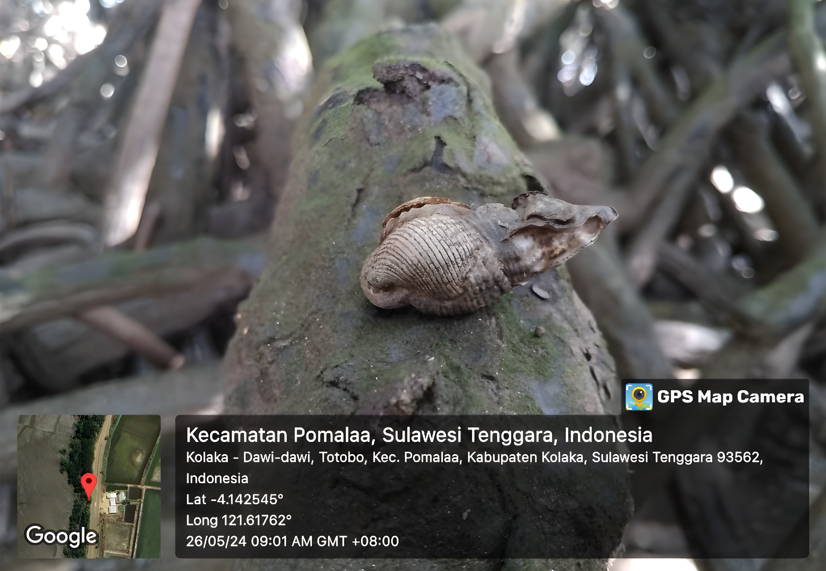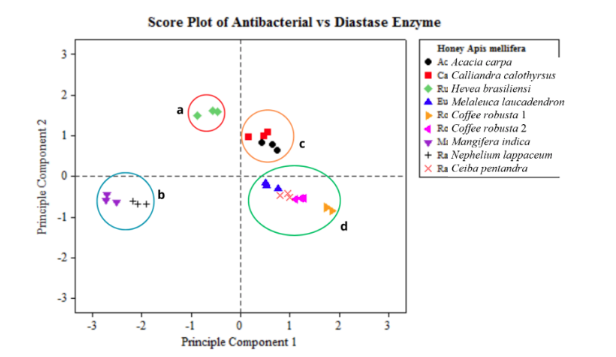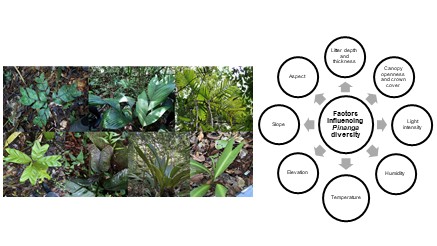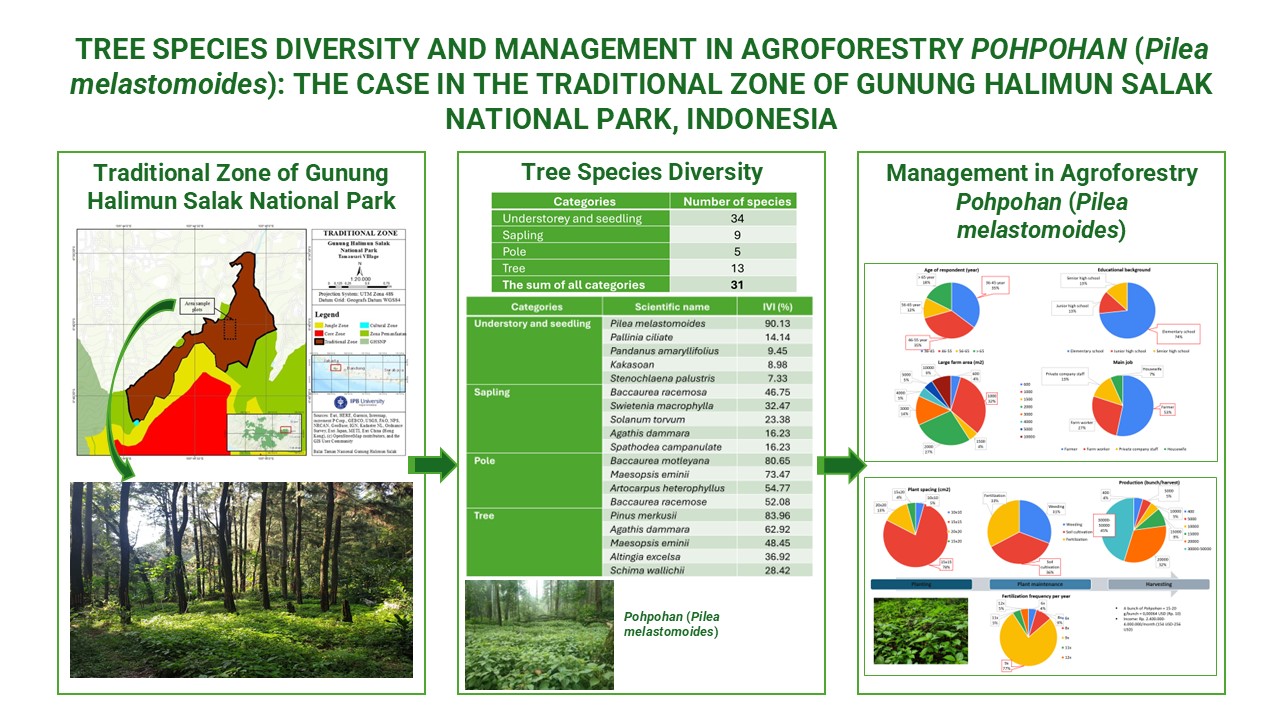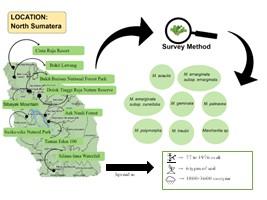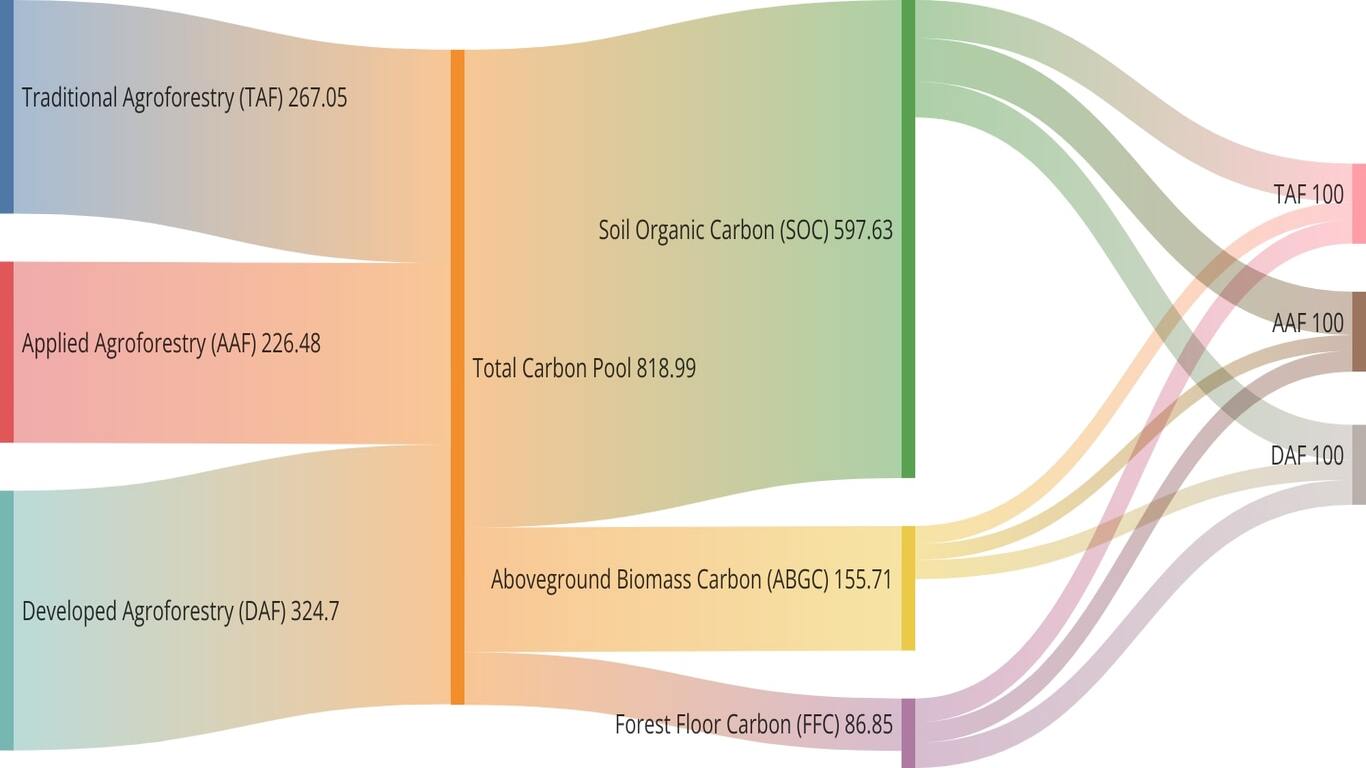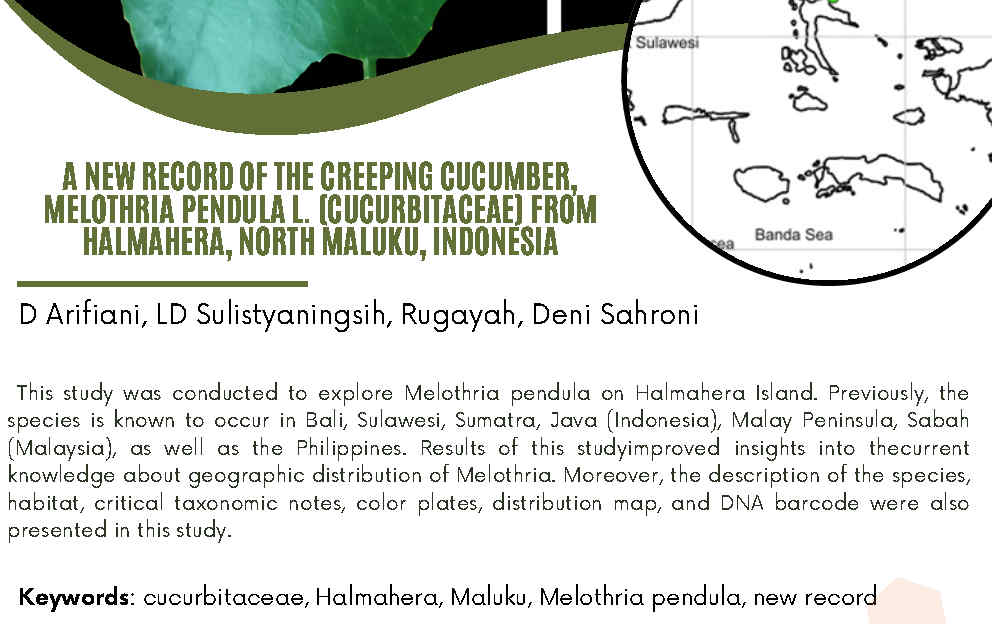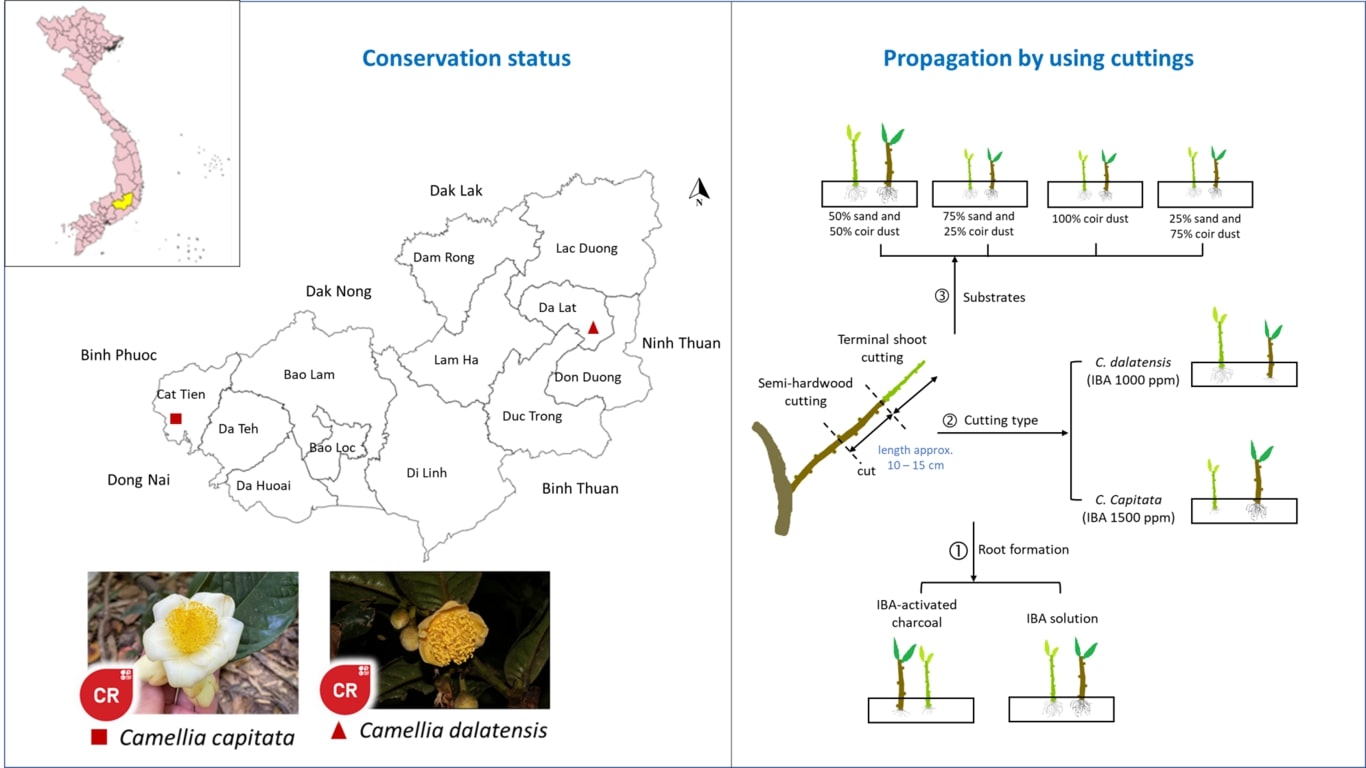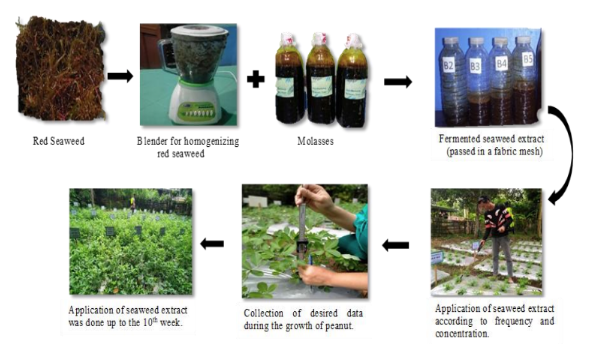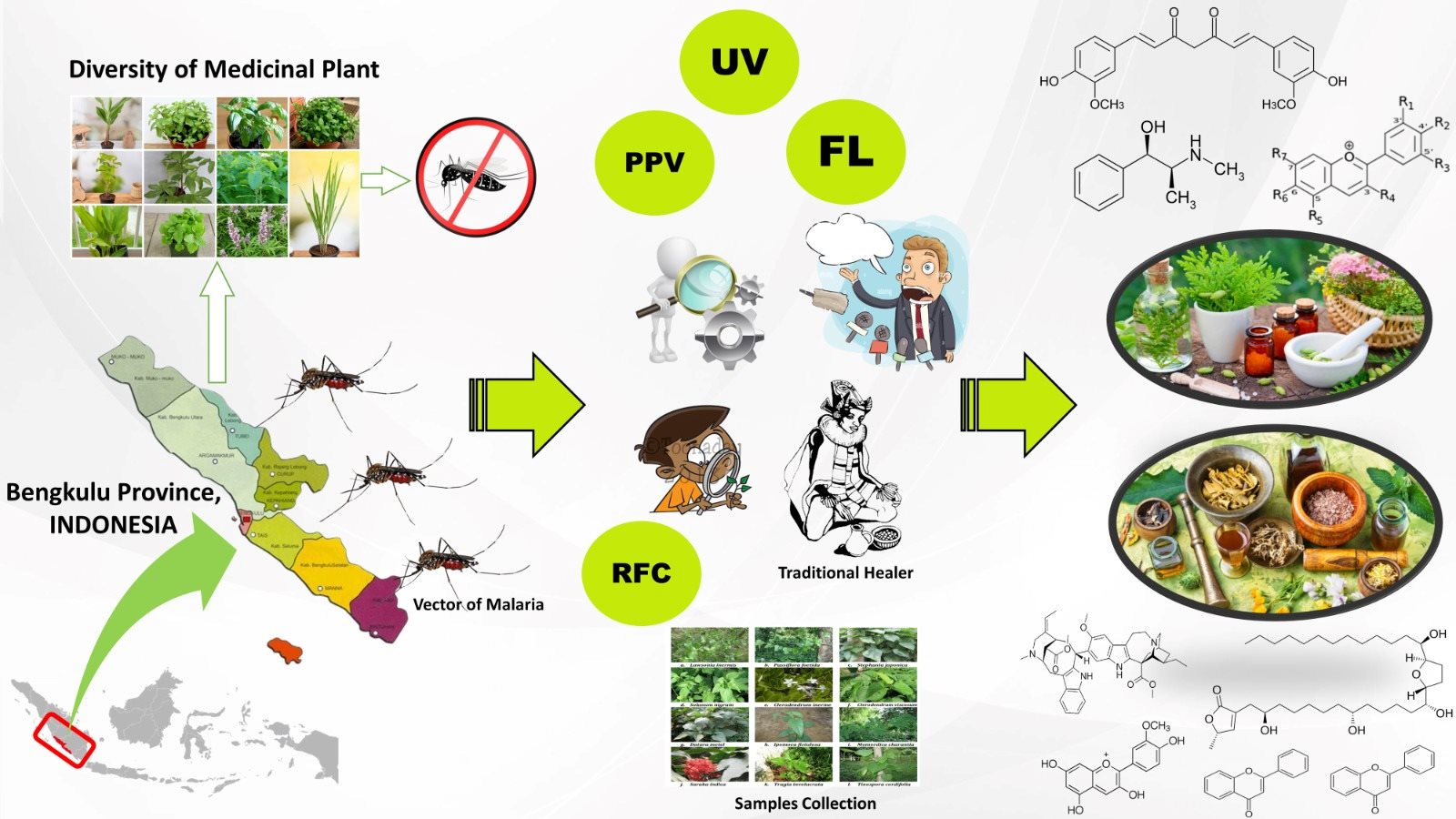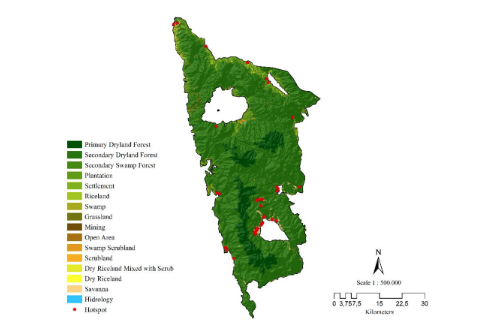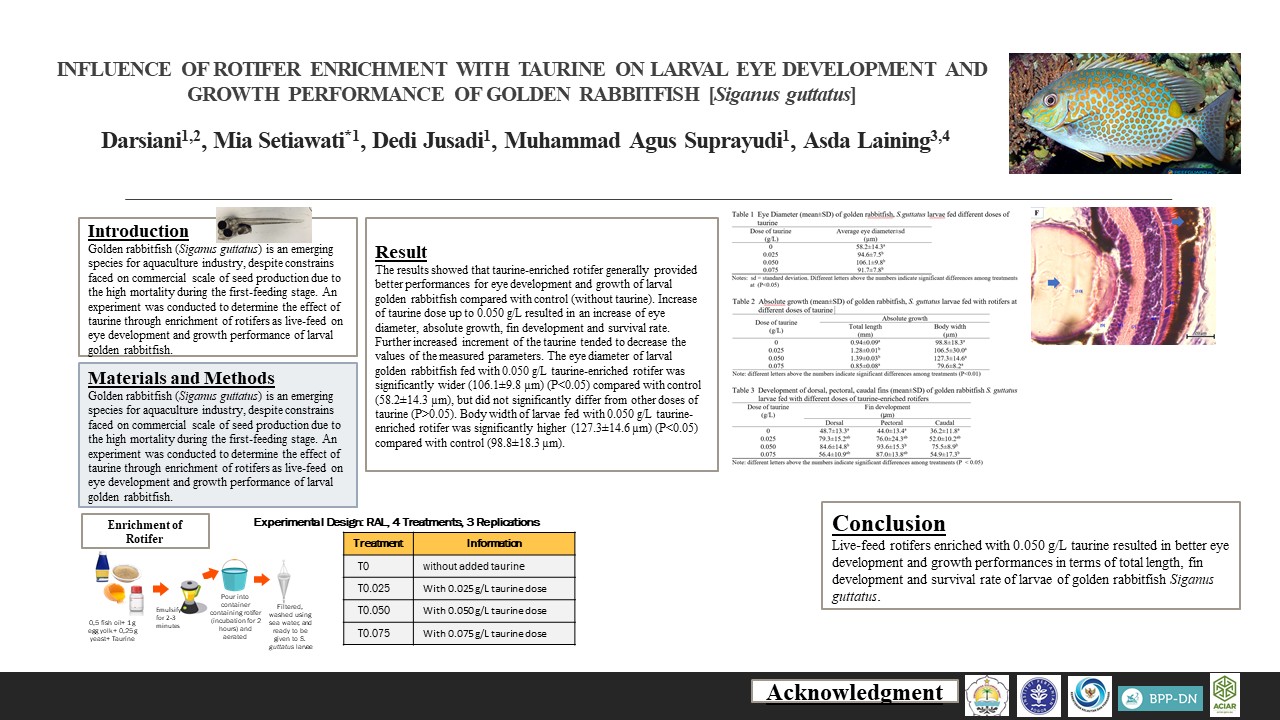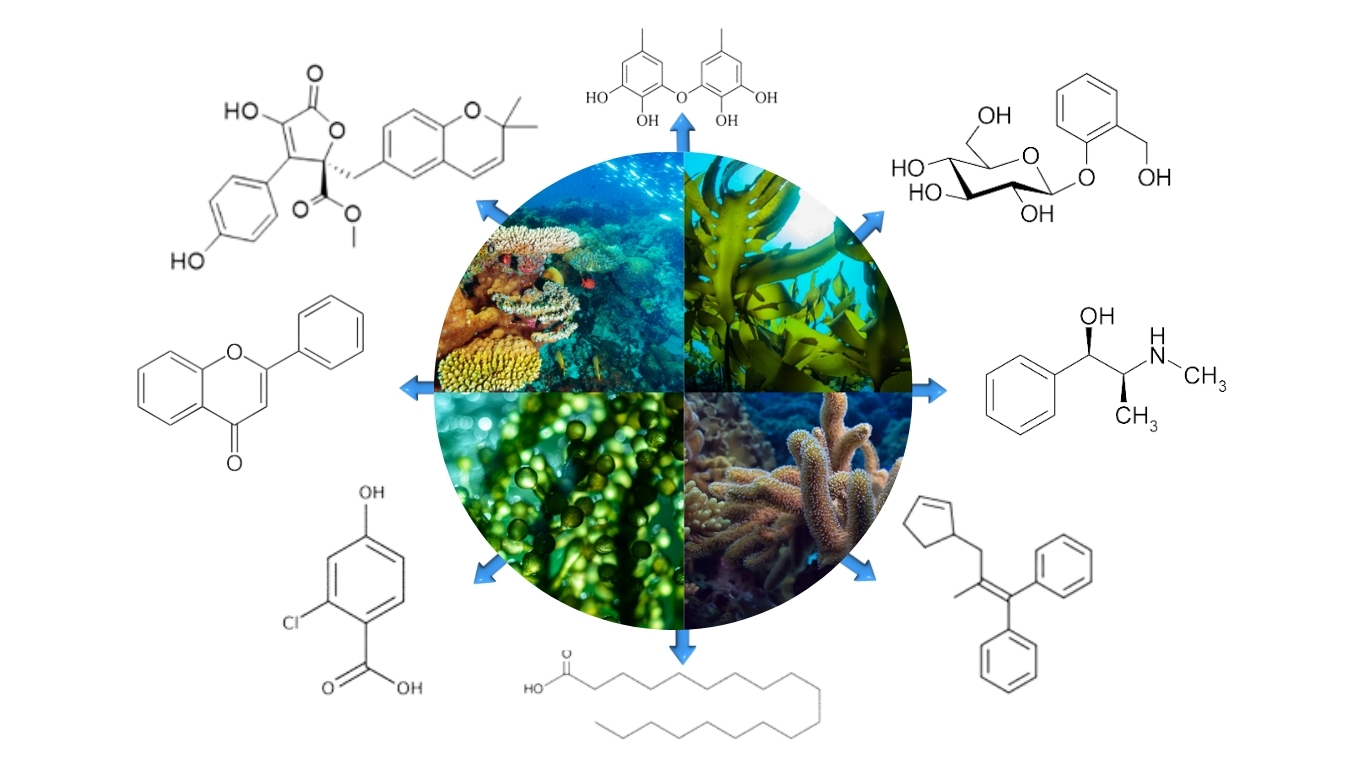EXISTING CONDITION OF GASTROPODS COMMUNITY IN COASTAL AREAS AFFECTED BY NICKEL OVERBURDEN IN POMALAA DISTRICT, SOUTHEAST SULAWESI PROVINCE, INDONESIA
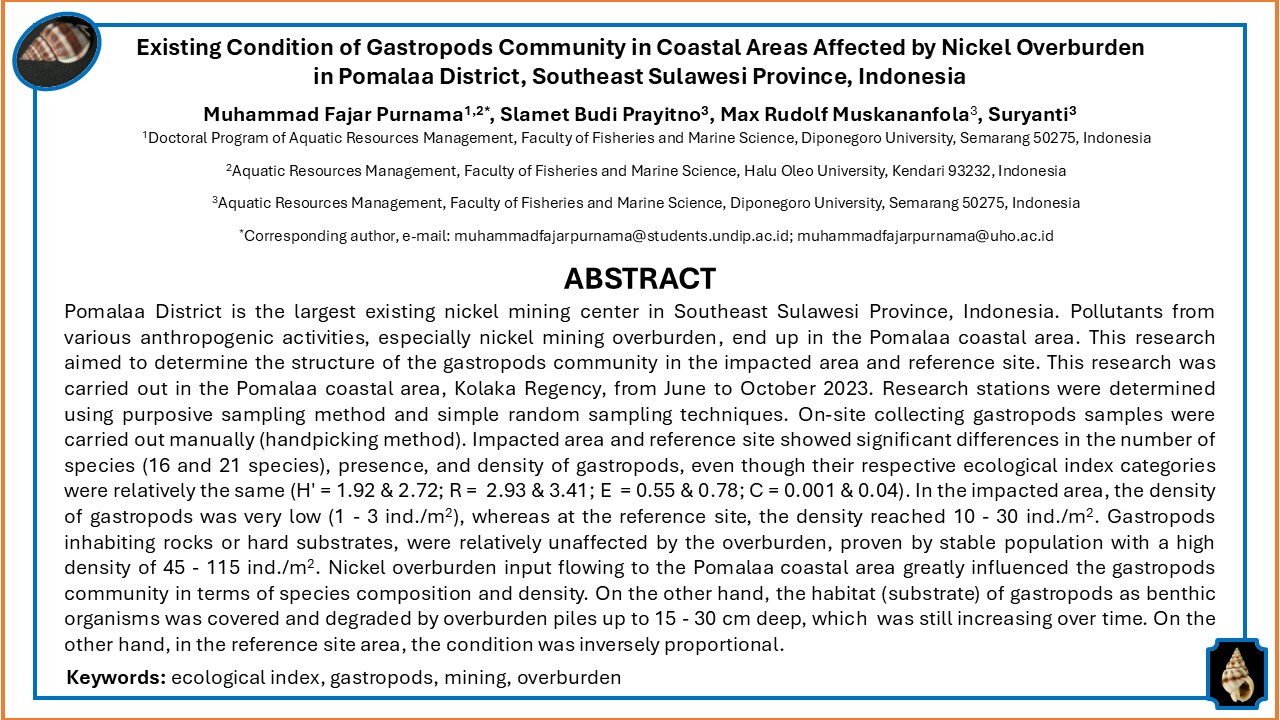
Downloads
ARTICLE HIGHLIGHT
The present investigation provides substantiated empirical evidence demonstrating that nickel extraction operations have exerted considerable detrimental effects on the ecological integrity of the Pomalaa coastal region in Southeast Sulawesi. Environmental degradation and disruption of ecological equilibrium have been observed as direct consequences of persistent overburden waste disposal. The introduction of mining overburden into the Pomalaa coastal ecosystem has resulted in the extirpation of critical gastropod taxa and significant population reductions among persisting species when compared with control sites featuring undisturbed substrate conditions. The documented diminished gastropod population densities within nickel mining-affected zones serve as biological indicators of profound environmental deterioration attributable to these industrial activities.
ABSTRACT
Pomalaa District is the largest existing nickel mining center in Southeast Sulawesi Province, Indonesia. Pollutants from various anthropogenic activities, especially nickel mining overburden, end up in the Pomalaa coastal area. This research aimed to determine the structure of the gastropods community in the impacted area and reference site. This research was carried out in the Pomalaa coastal area, Kolaka Regency, from June to October 2023. Research stations were determined using purposive sampling method and simple random sampling techniques. On-site collecting gastropods samples were carried out manually (handpicking method). Impacted area and reference site showed significant differences in the number of species (16 and 21 species), presence, and density of gastropods, even though their respective ecological index categories were relatively the same (H' = 1.92 & 2.72; R = 2.93 & 3.41; E = 0.55 & 0.78; C = 0.001 & 0.04). In the impacted area, the density of gastropods was very low (1 - 3 ind./m2), whereas at the reference site, the density reached 10 - 30 ind./m2. Gastropods inhabiting rocks or hard substrates, were relatively unaffected by the overburden, proven by stable population with a high density of 45 - 115 ind./m2. Nickel overburden input flowing to the Pomalaa coastal area greatly influenced the gastropods community in terms of species composition and density. On the other hand, the habitat (substrate) of gastropods as benthic organisms was covered and degraded by overburden piles up to 15 - 30 cm deep, which was still increasing over time. On the other hand, in the reference site area, the condition was inversely proportional.
Downloads
Abdullah A, Adibrata S, Aisyah S. 2021. The relationship between environmental parameters and gastropod community structure in Kelabat Bay waters, Bangka Belitung. Aquatics: Journal of Aquatic Resources, 15(1): 37-46.
Aouissi R, El Qot GM, Salmi-Laouar S, Gomez-Espinosa C, Buitron-Sanchez BE. 2024. Cenomanian gastropods of Bellezma-Aures mountains (Batna, NE Algeria): Taxonomy, palaeoecology and palaeobiogeography. J African Earth Sci 209: 105100. DOI: 10.1016/j.jafrearsci.2023.105100 DOI: https://doi.org/10.1016/j.jafrearsci.2023.105100
Ateş AS, Doğan A, Acar SEÇİL, Büyükateş YEŞİM, Dağlı E, Bakır AK, Mülayim A. 2023. Seasonal effects of environmental variables on molluscan communities in Çardak Lagoon (Turkish Straits). Russian J Mar Biol 49(3):215-28. DOI: 10.1134/S1063074023030021 DOI: https://doi.org/10.1134/S1063074023030021
Babushkin ES, Andreeva SI, Nekhaev IO, Vinarski MV. 2023. The “Minor water bodies”and their Malacofauna: Are freshwater gastropod communities usable for habitat classification?. Water 15(6):1178. DOI: 10.3390/w15061178 DOI: https://doi.org/10.3390/w15061178
Bantayan JM, Lomoljo-Bantayan NA, Villegas J. 2023. Community structure of macroinvertebrates in protected and exploited areas of Baganga, Davao Oriental, Philippines. Davao Research Journal 14(1):17-31. DOI: 10.59120/drj.v14i1.7 DOI: https://doi.org/10.59120/drj.v14i1.7
Bouchet P, Kantor YI, Puillandre N. 2011. A new operational classification of the Conoidea (Gastropoda). J Mollusc Stud 77:273-308. DOI: 10.1093/mollus/eyr017 DOI: https://doi.org/10.1093/mollus/eyr017
Bravo H, Cheng CL, Iannucci A, Natali C, Quadros A, Rhodes M, Fratini S. 2021. A DNA barcode library for mangrove gastropods and crabs of Hong Kong and the Greater Bay Area reveals an unexpected faunal diversity associated with the intertidal forests of Southern China. BMC Ecol Evol 21(1):1-15. DOI:10.1186/s12862-021-01914-6 DOI: https://doi.org/10.1186/s12862-021-01914-6
Budi DAA, Chrisna AS, Raden A. 2013. Study of the abundance of gastropods in the eastern part of Semarang Waters. Jurnal of Marine Research 2(4):56-65.
Cappenberg HAW. 2006. Observation of mollusk communities in the waters of the Derawan Islands, East Kalimantan. Oceanology and Limnology in Indonesia 39:74-87.
Carobene D, Bussert R, Struck U, Reddin CJ, Aberhan M. 2023. Influence of abiotic and biotic factors on benthic marine community composition, structure and stability: a multidisciplinary approach to molluscan assemblages from the Miocene of northern Germany. Papers in Palaeontology 9(3):e1496. DOI: 10.1002/spp2.1496 DOI: https://doi.org/10.1002/spp2.1496
Čejka T, Jarolímek I, Michalková M, Šibíková M. 2023. Plant and gastropod diversity across fragmented urban landscapes: Patterns and environmental drivers. Research Square [Internet]. Available from: https://www.researchsquare.com/article/rs-3416407/v1. DOI: 10.21203/rs.3.rs-3416407/v1 DOI: https://doi.org/10.21203/rs.3.rs-3416407/v1
Chakrabarty D, Das SK. 2006. Alteration of macroinvertebrate community in tropical lentic systems in context of sediment redox potential and organic pollution. Biol Rhythm Res 37(3):213-22. DOI: 10.1080/09291010600689101 DOI: https://doi.org/10.1080/09291010600689101
Čiliak M, Čejka T, Tej B, Oboňa J, Manko P. 2024. Species richness patterns and community structure of land snail communities along an urban-rural gradient in river floodplains. Urban Ecosyst 27(3):953-63. DOI: 10.1007/s11252-023-01501-1 DOI: https://doi.org/10.1007/s11252-023-01501-1
Curren E, Yu DCY, Leong SCY. 2024. From the seafloor to the surface: A global review of gastropods as bioindicators of marine microplastics. Water Air Soil Pollut 235(1):45. DOI: 10.1007/s11270-023-06823-6 DOI: https://doi.org/10.1007/s11270-023-06823-6
Davis JP, Pitt KA, Connolly RM, Fry B. 2015. Community structure and dietary pathways for invertebrates on intertidal coral reef flats. Food Webs 3:7-16. DOI: 10.1016/j.fooweb.2015.04.001 DOI: https://doi.org/10.1016/j.fooweb.2015.04.001
Degamon LS, Eviota MP, Hugo RL, Bertulfo RE, Odtojan MM, Buenaflor GS, Cuadrado JT. 2023. Length-weight relationship of bivalves and gastropods from mangrove forest of Brgy. Nabago, Surigao City, Philippines. IOP Conf Ser Earth Environ Sci 1250(1):012003. DOI:10.1088/1755-1315/1250/1/012003 DOI: https://doi.org/10.1088/1755-1315/1250/1/012003
De Necker L, Dyamond K, Greenfield R, van Vuren J, Malherbe W. 2023. Aquatic invertebrate community structure and functions within a Ramsar wetland of a premier conservation area in South Africa. Ecol Indic 148:110135. DOI: 10.1016/j.ecolind.2023.110135 DOI: https://doi.org/10.1016/j.ecolind.2023.110135
Ebadzadeh H, Shojaei MG, Seyfabadi J. 2024. The effect of habitat structural complexity on gastropods in an arid mangrove wetland. Wetlands Ecol Manage 32(1):139-51. DOI: 10.1007/s11273-023-09966-9 DOI: https://doi.org/10.1007/s11273-023-09966-9
Ernawati NM, Dewi APWK, Sugiana IP, Dharmawan IWE, Ma'ruf MS, Galgani GA. 2024. Mangrove gastropod distribution based on dominant vegetation classes and their relationship with physicochemical characteristics on fringe mangroves of Lembongan Island, Bali, Indonesia. Biodiversitas 25(1):142-52. DOI: 10.13057/biodiv/d250116 DOI: https://doi.org/10.13057/biodiv/d250116
Fachrul MF. 2007. Metode sampling bioekologi [Bioecological sampling method]. Jakarta (ID): Bumi Aksara. 199 p.
Fitria Y, Fitrani M, Nugroho RY, Putri WAE. 2023. Gastropods as bioindicators of heavy metal pollution in the Banyuasin estuary shrimp pond area, South Sumatra, Indonesia. Acta Ecol Sin 43(6):1129-37. DOI: 10.1016/j.chnaes.2023.05.009 DOI: https://doi.org/10.1016/j.chnaes.2023.05.009
Guan Q, Wu H, Xu L, Kang Y, Lu K, Liu D, Zhang Z. 2023. Hydrological connectivity shapesmultiple diversity facets of snail (Mollusca: Gastropoda) assemblages in freshwater floodplain wetlands. Ecol Indic 153:110467. DOI: 10.1016/j.ecolind.2023.110467 DOI: https://doi.org/10.1016/j.ecolind.2023.110467
Guan Q, Wu H, Xu X, Zhang Z, Xue Z. 2023. Geographical and climate‐dependent patterns in spatial distributions of snail (Mollusca: Gastropoda) assemblages in freshwater wetlands across Northeast China. Freshw Biol 68(6):1066-78. DOI: 10.1111/fwb.14086 DOI: https://doi.org/10.1111/fwb.14086
Hamzah. 2009. Water quality study at the Pomalaa nickel mining site, Southeast Sulawesi. [Thesis]. Bogor (ID): Faculty of Graduate Studies, Bogor Agricultural University. 270 p.
Hamzah HE, Riani E, Saharuddin NSI. 2015. Pollution load, assimilative capacity and quality status of coastal waters in Pomalaa nickel mining site of Southeast Sulawesi. Int J Res 3(03):2311-484.
Hau TD, Hung ND, Hai TN. 2021. Community structure and ecological distribution of benthic animals in Tien Hai mangrove forest, Northern Vietnam. Acad J Biol 43(3):95-112. DOI:10.15625/2615-9023/14941 DOI: https://doi.org/10.15625/2615-9023/14941
Hawari A, Bimtal A, Efriyeldi. 2014. Hubungan antara bahan organic sedimen dengan kelimpahan makrozoobenthos di Perairan Pantai Pandan Provinsi Sumatera Utara [The relationship between sediment organic material and the abundance of macrozoobenthos in the Waters of Pandan Beach, North Sumatra Province]. Jurnal Online Mahasiswa 1(2).
Hendrickx ME, Brusca RC, Cordero M, Ramírez G. 2007. Marine and brackish-water molluscan biodiversity in the Gulf of California, Mexico. Scientia Marina 71(4):637-47. DOI: 10.3989/scimar.2007.71n4637 DOI: https://doi.org/10.3989/scimar.2007.71n4637
Hertika AMS, Sudaryanti S, Musa M, Amron K, Putra RBDS, Alfarisi MA, Halimah MF. 2024. Benthic macroinvertebrates as bioindicators to detect the level of water pollution in the upstream segment of Brantas River Watershed in Malang, East Java, Indonesia. Biodiversitas 25(2):632-43. DOI: 10.13057/biodiv/d250222 DOI: https://doi.org/10.13057/biodiv/d250222
Isfaeni H, Rusdi R, Indriani RP, Mahardika RD, Oetari F. 2024. Gastropod community structure at Sepanjang beach, Yogyakarta. In AIP Conference Proceedings 2982(1):2-9. DOI: 10.1063/5.0189738 DOI: https://doi.org/10.1063/5.0189738
Kaliu S, Fitra RA. 2019. Composition of mangrove vegetation and vertical fauna identification on the Pomalaa coast, Kolaka Regency, Southeast Sulawesi. Saintifik 5(2):127-34. DOI: 10.31605/saintifik.v5i2.229 DOI: https://doi.org/10.31605/saintifik.v5i2.229
Keerthana M, Arisekar U, Kingston SD, Sudhan C. 2023. Malacofaunal diversity (Gastropods and Bivalves) along the mangrove forest area of the Gulf of Mannar marine biosphere region, South India. Regional Studies in Marine Science 67:103201. DOI: 10.1016/j.rsma.2023.103201 DOI: https://doi.org/10.1016/j.rsma.2023.103201
Khouw AS. 2016. Methods and quantitative analysis in marine bioecology. Bandung (ID): Alphabet. 318 p.
Kudratov J, Pazilov A, Maxammadiyev Z, Urazova R, Otakulov B, Bazarov B, Urinova X. 2023. Diversity and ecology of molluscs (Gastropods) in mountain streams, Nurota mountain range, Uzbekistan. Biodiversitas 24(4): 2402-8. DOI: 10.13057/biodiv/d240455 DOI: https://doi.org/10.13057/biodiv/d240455
Kurniawan ER, Ambarwati R, Isnaningsih NR. 2024. Diversity, abundance, and utilization of bivalves on the south coast of Pamekasan, Madura Island, Indonesia. Biodiversitas 25(6):2454-62. DOI: 10.13057/biodiv/d250614 DOI: https://doi.org/10.13057/biodiv/d250614
Lewin I, Stępień E, Szlauer-Łukaszewska A, Pakulnicka J, Stryjecki R, Pešić V, Zawal A. 2023. Drivers of the structure of mollusc communities in the natural aquatic habitats along the valley of a lowland river: Implications for their conservation through the buffer zones. Water 15(11):2059. DOI: 10.3390/w15112059 DOI: https://doi.org/10.3390/w15112059
Liu CL, Xu Q, Wang Z, Jiang XB, Ding GM, Ren QQ, Liu M. 2023. Community structure of benthic molluscs shaped by environmental and ecological variables in the coastal waters of Changle, Fujian Province, China. Front Mar Sci 10:1045393. DOI: 10.3389/fmars.2023.1045393 DOI: https://doi.org/10.3389/fmars.2023.1045393
Ludwig JA, Reynolds JF. 1988. Statistical ecology: A primer on methods and computing. New York (US): John Wiley & Sons.
Mansingh A, Pradhan A, Ekka NJ. 2021. Distribution, diversity and abundance of molluscs in the intertidal profile of the Bhitarkanika mangrove ecosystem. Molluscan Res 41(1):7-15. DOI: 10.1080/13235818.2021.1882924 DOI: https://doi.org/10.1080/13235818.2021.1882924
Mardatila S, Izmiarti I, Nurdin J. 2016. Density, diversity and distribution patterns of gastropods in Lake Diatas, Solok Regency, West Sumatra Province. Biocelebes 10(2):25-31.
Maria CB. 2020. Species richness and abundance of bivalves and gastropods in mangrove forests of Casiguran, Aurora, Philippines. Open Journal of Ecology 10:778-87. DOI:10.4236/oje.2020.1012048 DOI: https://doi.org/10.4236/oje.2020.1012048
Medeiros HR, Maunder JE, Haughian S, Harper KA. 2023. Differing responses of native and non-native slugs (Mollusca: Gastropoda) to local vegetation structure and landscape composition in cool-temperate forested wetlands. Biol Invasions 25(9):2789-99. DOI: 10.1007/s10530-023-03073-9 DOI: https://doi.org/10.1007/s10530-023-03073-9
MolluscaBase. 2023. [Internet]. Available from: https://www.molluscabase.org/. Accessed on 21 July 2023.
Montesinos-Navaro A, Estrada A, Font X, Matias MG, Meirelles C, Mendoza M, Honrado JP, Prasad HD, Vicente JR, Early R. 2018. Community structure informs species geographic distribution. PLoS ONE 13(5):1-16. DOI: 10.1371/journal.pone.0197877 DOI: https://doi.org/10.1371/journal.pone.0197877
Mukhopadhyay A, Chattopadhyay D, Poddar A, Saha R, Patil S, Sonkar T, Roy A. 2024. Records of gastropod drilling predation on molluscan prey from the Anaipadi Member (Garudamangalam Formation; Upper Cretaceous, Coniacian) of the Ariyalur Sub-basin, India. Cretaceous Research 154:105721. DOI: 10.1016/j.cretres.2023.105721 DOI: https://doi.org/10.1016/j.cretres.2023.105721
Munandar A, Ali MS, Karina S. 2016. Macrozoobenthos community structure in the Kuala Rigaih estuary, Setia Bakti District, Aceh Jaya Regency,. [Dissertation]. Banda Aceh (ID): Universitas Syiah Kuala.
Nugroho KD, Suryono CA, Irwani I. 2012. Gastropod community structure in coastal waters, Genuk District, Semarang City. Journal of Marine Research 1(1):100-9.
Nybakken JW, Bertness MD. 2005. Marine Biology: An ecological approach. 6th Edition. San Francisco (US): Pearson/Benjamin Cummings.
Odum EP. 1993. Dasar-dasar ekologi [Fundamentals of Ecology]. Translated from Fundamentals of Ecology. Samingan T (translator). Yogyakarta: Gadjah Mada University Press.
Pérez-Estrada CJ, Rodríguez-Estrella R, Brun-Murillo FG, Gurgo-Salice P, Valles-Jiménez R, Morales-Bojórquez E, Medina-López MA. 2023. Diversity and seasonal variation of the molluscan community associated with the seagrass Halodule wrightii in a marine protected area in the southern Gulf of California. Aquatic Ecology 57(2):299-319. DOI: https://doi.org/10.1007/s10452-023-10011-3
Poutiers JM. 1998. Gastropods. In: Carpenter KE and Niem VH (Editors). FAO Spesies Identification Guide for Fishery Purposes. The Living Marine Resources of The Western Central Pacific Volume 1. Seaweeds, corals, bivalves, and gastropods. Rome (IT): Food and Agriculture Organization (FAO).
Pratiwi MA, Ernawati NM. 2016. Analysis of water quality and mollusk density in the mangrove ecosystem area, Nusa Lembongan. J Mar Aquatic Sci 2(2):67-72. DOI: 10.24843/jmas.2016.v2.i02.67-72 DOI: https://doi.org/10.24843/jmas.2016.v2.i02.67-72
Prayudi SD, Korin A, Kaminski MA. 2024. Thermal tolerance of intertidal gastropods in the Western Arabian Gulf. Journal of Sea Research 197:102470. DOI: 10.1016/j.seares.2024.102470 DOI: https://doi.org/10.1016/j.seares.2024.102470
Presley SJ, Willig MR. 2023. Long‐term responses to large‐scale disturbances: Spatiotemporal variation in gastropod populations and communities. Oikos 2023(7):e09605. DOI: https://doi.org/10.1111/oik.09605
Purnama MF, Prayitno SB, Muskananfola MR, Suryanti S. 2024a. Existing condition of gastropod communities in areas affected by nickel mining overburden in the mangrove ecosystem of Dawi-Dawi, Southeast Sulawesi. BIOTROPIA 31(2):266-76. DOI: 10.11598/btb.2024.31.2.2175 DOI: https://doi.org/10.11598/btb.2024.31.2.2175
Purnama MF, Prayitno SB, Muskananfola MR, Suryanti S. 2024b. Ecological indices of mangrove gastropod community in nickel mining impacted area of Pomalaa, Southeast Sulawesi. BIOTROPIA 31(3):359-71. DOI: 10.11598/btb.2024.31.3.2267 DOI: https://doi.org/10.11598/btb.2024.31.3.2267
Purnama MF, Prayitno SB, Muskananfola MR, Suryanti S. 2024c. Tropical gastropod density and diversity in the mangrove forest of Totobo Village, Southeast Sulawesi, Indonesia. Biodiversitas 25(4):1663-75. DOI: 10.13057/biodiv/d250436 DOI: https://doi.org/10.13057/biodiv/d250436
Purnama MF, Prayitno SB, Muskananfola MR, Suryanti S. 2024d. Red berry snail Sphaerassiminea miniata (Gastropoda: Mollusca) and its potential as a bioindicator of environmental health in mangrove ecosystem of Pomalaa, Kolaka District, Indonesia. Biodiversitas 25(6):2330-39. DOI: 10.13057/biodiv/d250601 DOI: https://doi.org/10.13057/biodiv/d250601
Putro SP. 2017. The roles of macrobenthic mollusks as bioindicator in response to environmental disturbance: Cumulative k-dominance curves and bubble plots ordination approaches. IOP Conf Ser Earth Environ Sci 55(1):012022. DOI: 10.1088/1755-1315/55/1/012022 DOI: https://doi.org/10.1088/1755-1315/55/1/012022
Rachmawaty R. 2011. Macrozoobenthos diversity index as a bioindicator of pollution levels in the Jeneberang River Estuary. Bionature Journal 12(2):103-9.
Rahmasari T, Purnomo T, Ambarwati R. 2015. Diversity and abundance of gastropods on the south coast of Pamekasan Regency, Madura. Biosaintifika 7(1):48-54.
Ramón M, Marco-Herrero E, Galimany E, Recasens L, Abelló P. 2023. Faunistic and structural changes in shallow coastal benthic communities of the Ebre Delta (NW Mediterranean Sea). Diversity 15(5):623. DOI: 10.3390/d15050623 DOI: https://doi.org/10.3390/d15050623
Ranjan TJU, Babu R. 2016. Heavy metal risk assessment in Bhavanapadu Creek using three potamidid snails - Telescopium telescopium, Cerithidea obtusa and Cerithidea cingulata. Journal Environmental Analytical Toxicology 6: 385. DOI: 10.4172/2161-0525.1000385 DOI: https://doi.org/10.4172/2161-0525.1000385
Riniatsih I, Kushartono WE. 2009. Basic substrate and oceanographic parameters as determinants of the existence of gastropods and bilvavia on Sluke Beach, Rembang Regency. Marine Science 14(1):50-9.
Rubal M, Fernández-Gutiérrez J, Carreira-Flores D, Gomes PT, Veiga P. 2023. Abundance and distribution of non-indigenous Calyptraeidae gastropods along north and central Atlantic shores of Portugal. Continental Shelf Research 269:105138. DOI: 10.1016/j.csr.2023.105138 DOI: https://doi.org/10.1016/j.csr.2023.105138
Ruppert EE, Fox RS, Barnes RD. 2004. Invertebrate zoology: A functional evolutionary approach. 7th Edition. Belmont (US): Thompson Brooks/Cole.
Ruswahyuni R, Nata W. 2008. The populations of macrobenthos organisms in the peat soil in Rawapening Reservoir. Saintek Perikanan 5(2):40-6.
Schowalter TD. 2000. Insect ecology: An ecosystem approach. San Diego (US): Academic Press. 483 p.
Seinor K, Purcell SW, Malcolm H, Smith SD, Benkendorff K. 2024. Extended and spatially asynchronous reproductive periodicity in a harvested, warm‐temperate rocky‐reef gastropod (Turbinidae). Fisheries Oceanography 33(1):e12653. DOI: 10.1111/fog.12653 DOI: https://doi.org/10.1111/fog.12653
Soegianto S. 2004. Methods for estimating water pollution using biological indicators. Surabaya (ID): Airlangga University Press.
Strong EE, Gargominy O, Ponder WF, Bouchet P. 2008. Global diversity of gastropods (Gastropoda; Mollusca) in freshwater. Hydrobiologia 595(1):149-66. DOI: 10.1007/s10750- 007-9012-6 DOI: https://doi.org/10.1007/s10750-007-9012-6
Subagio, Muliadi S. 2014. Diversity of gastropod types and dominance in tidal zones (intertidal zone) in Sekotong District, West Lombok Regency based on habitat. IKIP Mataram Scientific Journal 1(2):155-62.
Sun YX, Li XX, Tan Y, Wang J, Dong YW. 2022. Microhabitat thermal environment controls community structure of macrobenthos on coastal infrastructures. Estuarine, Coastal and Shelf Science 277:108060. DOI: https://doi.org/10.1016/j.ecss.2022.108060
Susiana. 2011. Diversity and density of mangroves, gastropods and bivalves in the Perancak Estuary, Bali. [Thesis]. Makassar (ID): Faculty of Graduate Studies, Universitas Hasanuddin.
Susintowati S, Puniawati N, Poedjirahajoe E, Handayani NSN, Hadisusanto S. 2019. The intertidal gastropods (Gastropoda: Mollusca) diversity and taxa distribution in Alas Purwo National Park, East Java, Indonesia. Biodiversitas 20(7):2016-27. DOI: 10.13057/biodiv/d200731 DOI: https://doi.org/10.13057/biodiv/d200731
Syamsurisal. 2011. Study of several macrozoobenthos community indices in mangrove forests, Coppo Village, Barru Regency. [Thesis]. Makassar (ID): Faculty of Marine and Fisheries Sciences, Universitas Hasanuddin.
Thilakarathne DD, Ranawana KB, Kumburegama S. 2024. Biodiversity dynamics of terrestrial gastropods in the tropical montane rainforests of Nuwara Eliya, Sri Lanka. Archives of Biological Sciences (00): 2-2. DOI: 10.2298/ABS231126002T DOI: https://doi.org/10.2298/ABS231126002T
Timm H, Ivask M, Möls T. 2001. Response of macroinvertebrates and water quality to longterm decrease in organic pollution in some estonian streams during 1990-1998. Hydrobiologia 464: 153-64. DOI: 10.1023/A:1013999403209 DOI: https://doi.org/10.1023/A:1013999403209
Udayantha H, Munasinghe. 2009. Investigation of the factors that influence on the distribution of mollusk, Faunus sp., (Mollusca: Gastropoda: Thiaridae) along the Lunuwila Ela, Galle. Ruhuna J Sci 4(1):65-74. DOI: 10.4038/rjs.v4i0.60 DOI: https://doi.org/10.4038/rjs.v4i0.60
Vian LW, Sharuiddin SFF, Hwai ATS, Nilamani N, Woo SP, Ilias N, Yasin Z. 2022. Diversity and distribution of molluscs (Gastropoda and Bivalvia) in the seagrass beds at Pulau Gazumbo, Penang, Malaysia. Journal of Survey in Fisheries Sciences 9(1) :79-95. DOI: 10.18331/SFS2022.9.1.7 DOI: https://doi.org/10.18331/SFS2022.9.1.7
Vilenica M, Lajtner J, Rebrina F, Kepčija RM, Rumišek M, Brigić A. 2024. Gastropod assemblages in the harsh environment of Mediterranean Dinaric karst intermittent rivers. Ecologica Montenegrina 71:200-209. DOI: 10.37828/em.2024.71.20 DOI: https://doi.org/10.37828/em.2024.71.20
Wahyuni S, Yolanda R, Purnama AA. 2015. Gastropod (Mollusca) community structure in the waters of Menaming Dam, Rokan Hulu Regency, Riau. Biology Study Program FKIP Student Scientific Journal 1(1):1-5.
Wilhm JL. 1975. Biological indicators of pollution. In Whitton BA (Editor). River Ecology. Oxford (UK): Blackwell Scientific Publication. p. 375-402.
World register of marine species (worms). 2023. [Internet]. Available from: https://www.marinespecies.org/. Accessed on 21 July 2023.
Worldwide seashells collection. 2023. [Internet]. Available from: http://www.idscaro.net/sci/01_coll/index.htm. Accessed on 21 July 2023.
Yadav R, Malla PK, Dash D, Bhoi G, Patro S, Mohapatra A. 2019. Diversity of gastropods and bivalves in the mangrove ecosystem of Paradeep, east coast of India: a comparative study with other Indian mangrove ecosystems. Molluscan Res 39(4):325-32. DOI:10.1080/13235818.2019.1644701 DOI: https://doi.org/10.1080/13235818.2019.1644701
Yuniarti NA. 2012. Diversity and distribution of bivalves and gastropods (molluscs) on the Glayem Juntinyuat Coast, Indramayu, West Java. [Thesis]. Bogor (ID): Faculty of Graduate Studies, Bogor Agricultural University.
Zahidin M. 2008. Study of water quality at the Pekalongan River Estuary in terms of the macrozoobenthos diversity index and plankton saprobity index. [Thesis]. Semarang (ID): Universitas Diponegoro.
Zubayr SA. 2009. Analysis of heavy metal pollution status in coastal areas (Case study of disposal of liquid waste and solid tailings/Pomalaa nickel mining slag). [Thesis]. Bogor (ID): Faculty of Graduate Studies, Bogor Agricultural University. 127 p.
Copyright (c) 2025 Muhammad Purnama

This work is licensed under a Creative Commons Attribution-NonCommercial-NoDerivatives 4.0 International License.
Authors who publish with this journal agree with the following terms:
- Authors retain copyright and grant the journal right of first publication, with the work 1 year after publication simultaneously licensed under a Creative Commons attribution-noncommerical-noderivates 4.0 International License that allows others to share, copy and redistribute the work in any medium or format, but only where the use is for non-commercial purposes and an acknowledgement of the work's authorship and initial publication in this journal is mentioned.
- Authors are able to enter into separate, additional contractual arrangements for the non-exclusive distribution of the journal's published version of the work (e.g., post it to an institutional repository or publish it in a book), with an acknowledgement of its initial publication in this journal.
- Authors are permitted and encouraged to post their work online (e.g., in institutional repositories or on their website) prior to and during the submission process, as it can lead to productive exchanges, as well as earlier and greater citation of published work (See The Effect of Open Access).

